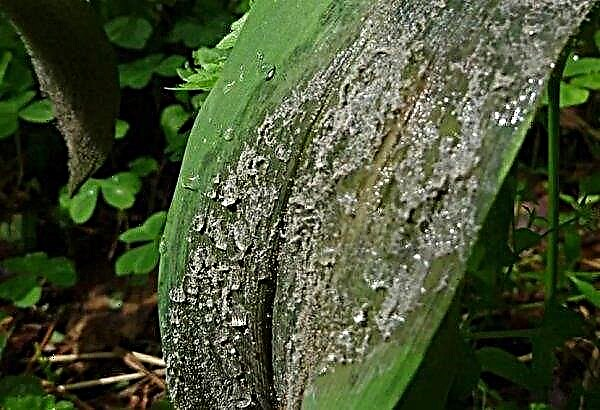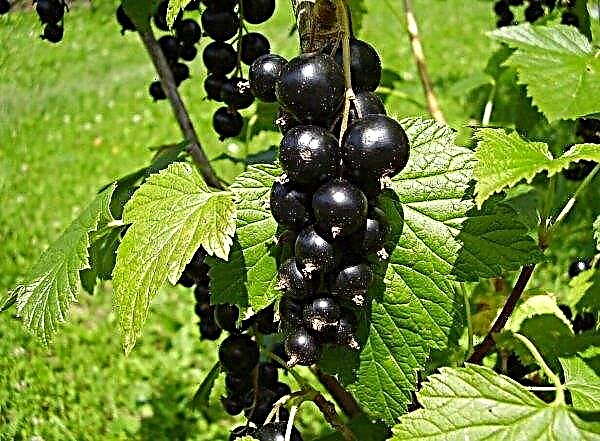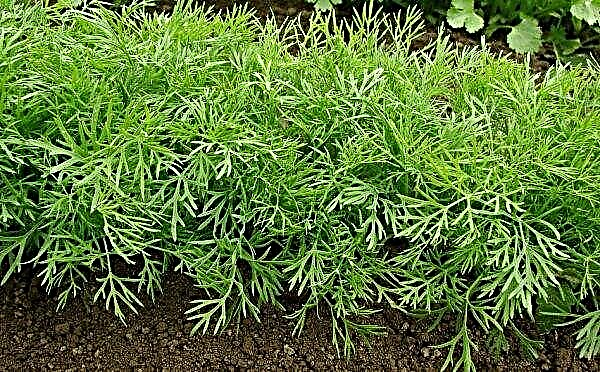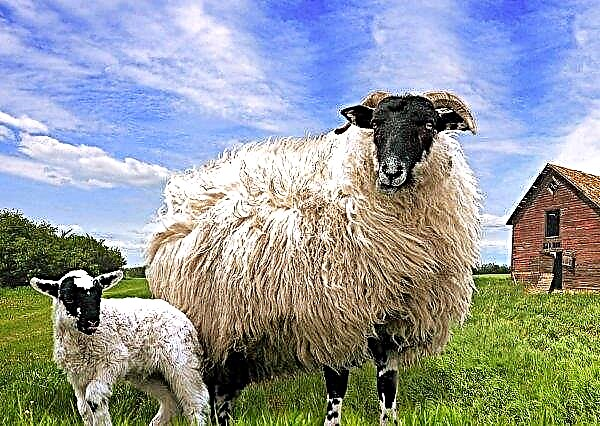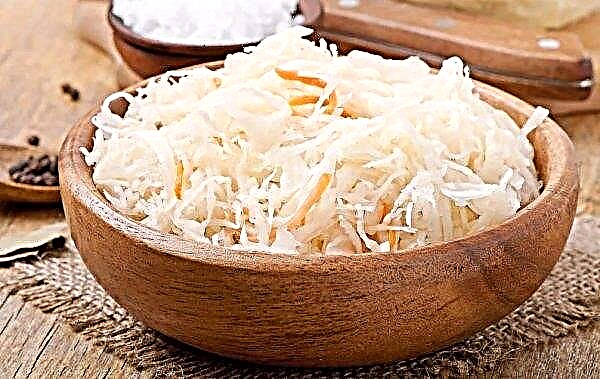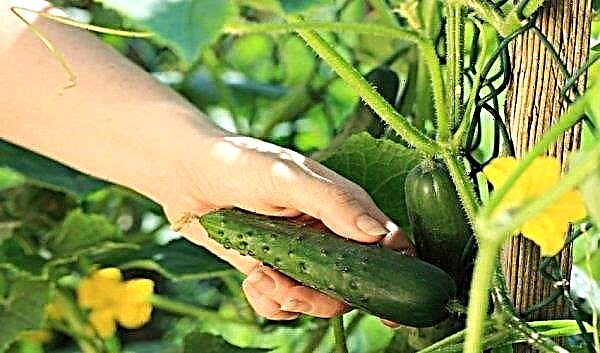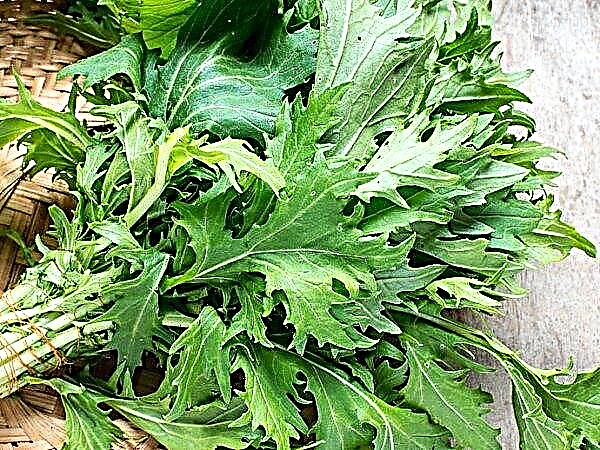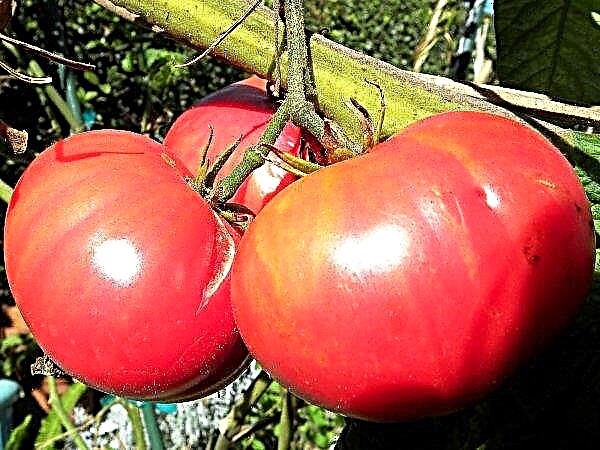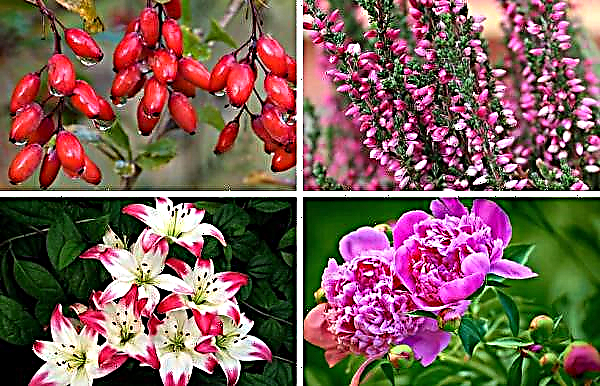Lentils are a legume plant. It is actively used in cooking by many peoples, as a result of which breeders have bred many varieties. Information on what varieties of this culture are, what is the difference between them and what useful properties they possess is contained in the article.
The best varieties
Lentils are not as popular with gardeners as potatoes, but they can also be grown in summer cottages. Below are the names and descriptions of the most productive varieties with delicious fruits.
Did you know? Lentils is considered one of the most ancient plants from the legume family. Lentil bBoth were discovered by archaeologists in modern Switzerland in buildings dating back to the Bronze Age.
Anfia
This is one of the most productive varieties. Ripening occurs in 3 months. Plants grow 57 cm tall. In addition to high productivity, the variety has a number of positive characteristics: it is self-pollinating, characterized by resistance to dry periods, major diseases, aversion to lodging and shedding. The fruits of this variety are green, flat. Ripen in June.

Lyubava
Plants grow half a meter in height and form many leaves. The ripening period is 70–75 days. Harvest can be harvested in July. Grains are yellow, flat round. The Lyubava variety is characterized by good tolerance to temperature differences, self-pollination. Plants do not lie down, the fruits do not fall off.

Luganchanka
The maturity of this lentil is mid-ripening - the fruits ripen 81–95 days after emergence. Bushes grow to a maximum of 57 cm. The yield level is up to 300 grains from one bush. The main positive qualities of Luganchanka are beautiful and tasty yellow fruits, good immunity to major diseases.

Penza 14
Beans of this variety ripen in the medium term - in 90–95 days. The variety is pollinated independently, does not lodge, and well resists diseases and harmful insects. The height of the bushes is about 45 cm. The fruits have a flat round shape. The color of their shell is green. The length of the pod is 14 cm.

Chiflik samples 7
The variety is characterized by an average ripening period (80–85 days), an average level of productivity, a tendency to lodging, self-pollination, and strong immunity. Harvesting can be carried out from June. Fruits are trapezoid or rhomboid. The shell is painted in yellow-green color, thin, well boiled.

Petrovskaya green
This varietal specimen is appreciated due to its high productivity, resistance to lodging and shedding, self-pollination. Bushes reach a maximum height of 45 cm. Fruits are formed in green with a bluish tint. They are flat-round in shape.

Petrovskaya 6
The main advantages of the variety: the fruits do not fall off, the bushes do not lie down, the plant self-pollinates. Lentils ripen in 90 days. It is flat-round in shape, yellow in color. The pods are 3 cm long.

Stepnaya 244
Beans reach maturity in 90 days. Bushes grow about 45 cm. A lot of leaves and pods 2 cm long are formed on them. They do not lie down, the fruits do not fall off from them. Plants tolerate drought well. Round beans, flattened. The color is yellow-green.

Aida
High-yielding variety with medium early ripening. Harvesting can be done 90 days after the emergence of sprouts. Bushes reach a height of 55 cm. A large number of leaves are formed on them. Fruits are yellow-green, rounded, flat.

Donskaya
High productivity indicators make this variety attractive for growing. Bushes grow by 58 cm. They rarely undergo diseases, do not lie down. Shedding of fruits does not occur. The beans are round, flat, yellow-green.

Beloved
The first fruits of this lentil appear 3 months after the germination of the sprouts. They are rounded in shape, flattened, yellow-green. The maximum height of the plant is 55 cm. Productivity of the variety is characterized by high rates.

Niva 95
The fertility of this variety ranges from medium to high and depends on the growing conditions. Fruits reach maturity over a period of 68–85 days. Bushes grow by 50 cm. The fruits are round, flat, yellow. The variety has a number of positive characteristics, including strong immunity, resistance to shedding and lodging.

Vekhovskaya 1
The plant forms undersized bushes up to 36 cm high with good foliage. Performance indicators and characteristics are excellent. Among the “pluses” of Vekhovskaya lentils is that it does not lie down and does not crumble, it tolerates dry periods, does not get sick and is not affected by harmful insects. Its fruits are rounded, flat, yellow.

Hope
81–96 days pass from the sprouting of the sprouts to the ripeness of the fruit. Bushes have a height of up to 50 cm. They feel normal during droughts, do not die, the fruits from the branches do not crumble. The beans are yellow, rounded in shape, flat.
Rause
This variety has medium-tall bushes — usually they do not exceed 57 cm. The fruits ripen on them in 81–96 days. The main characteristics of Rouse lentils: high productivity, self-pollination, excellent resistance to diseases. Beans with a yellow-green shell, flat, rounded.

Species classification
There are several varieties of lentils. Their differences are in color, composition, shape, useful properties, presence / absence of shell, cooking method, and taste.
Important! For eating, you should choose only high-quality beans. They must be intact insects, uniform in color, solid, dry, solid, clean.
Black
The fruits of this species are very reminiscent of black caviar, for which they received the name "beluga". Bred view in Canada. The grains are small, about 2-3 mm. They contain approximately 35% protein and 53% carbohydrates. After cooking, the beans retain their color and shape, and their shell softens. First dishes, stews, side dishes, salads, sauces, and sweet dishes are prepared from them.
 This type is advised to be introduced into the diet for people with cardiac abnormalities, vascular problems, cancer, rheumatism, vitamin deficiency, gastrointestinal diseases, diabetes, irregular bowel movements
This type is advised to be introduced into the diet for people with cardiac abnormalities, vascular problems, cancer, rheumatism, vitamin deficiency, gastrointestinal diseases, diabetes, irregular bowel movements
Red
A feature of red beans is that they do not have a shell; therefore, after heat treatment, they are boiled and lose their shape. They are recommended for cooking soups. Unlike other types, they contain the most iron and vegetable protein, and are also the most high-calorie ones.
 Red lentils are recommended to eat for those who have low hemoglobin and have diseases of the circulatory system
Red lentils are recommended to eat for those who have low hemoglobin and have diseases of the circulatory system
Green
It is believed that this species was developed by the French. The green variety contains the most dietary fiber. When cooking, it does not boil, the dishes are very tasty. Salads, side dishes, casseroles, first dishes are made of it.
Important! When eating green lentils at the same time as rice or other cereals, almost the entire complex of amino acids necessary for protein synthesis enters the body.
This type is recommended for those who are diagnosed with cholecystitis, hypertension, and rheumatism.

Orange
Orange beans do not have a shell, so delicious cereals, meatballs, mashed potatoes, side dishes come out of them. They are prepared quickly and simply, and their assimilation is easy, because they become very soft. During the heat treatment, the fruits do not lose valuable substances and beneficial properties.
Yellow
Yellow lentils, like red and orange, do not have a shell, which leads to its rapid preparation, softness, delicate taste and good digestibility after heat treatment. The fruits of this plant do not grow in this form, they are obtained by grinding green beans.
 Yellow lentils are most often used in recipes for mashed potatoes, pastes, stews, and toppings for baking. It is common in the national cuisine of India.
Yellow lentils are most often used in recipes for mashed potatoes, pastes, stews, and toppings for baking. It is common in the national cuisine of India.
White
Lentil flour and snacks are made from the white variety. She has the lowest taste and aromatic characteristics. The grains are large, somewhat resembling small beans. White beans are the hardest, so be sure to soak them before cooking. They are best suited for stewing: they make stew or stew with vegetables.

Brown
Brown beans are ideal for cooking soups, because they do not boil and do not soften to the consistency of porridge. Most of all, this species is appreciated by the Americans.
This species has large grains. They have a spicy taste and a nutty smell. They do not need soaking before cooking.

Shallow
In addition to the fact that lentils are different in color, it is still large and small. Large grains reach 6–8 mm in diameter, small grains up to 5 mm. The latter - cook faster.

Beneficial features
In cooking, lentils are popular, first of all, because of their nutritional value and rich vitamin and mineral composition.
Vitamins
Beans contain almost all vitamins. Most of them have vitamin B1 - 100.3 g of the product contains 33.3% of the daily norm for the human body, B4 - 19.3%, B6 - 27%, B5 - 24%, B9 - 22.5%, PP - 27 , 5%, B2 - 11.7%. Vitamins A, C, E, H, K, beta-carotene are also present.
Important! To preserve the maximum amount of valuable substances, lentils should not be cooked, but sprouted.
Iron
Of the minerals, lentils are especially rich in iron. To satisfy the daily dose in this element, a person needs to eat about 180 g of beans (a glass of 200 ml).
The product also contains a lot of potassium (27%), silicon (266%), magnesium (20%), sulfur (16%), phosphorus (48%), cobalt (116%), manganese (59%), copper (66% ), molybdenum (110%).

Phytoestrogens
Lentils belong to those products that contain phytoestrogens from the class of isoflavones - substances that can have an estrogenic and anti-estrogenic effect. Today, their influence on the human body is not fully understood. There are studies that indicate that they can reduce the effect of sex hormones in men, lead to impaired reproductive function in children, prevent the development of prostate cancer, and increase mood.
Lentil calories
Lentil fruits are quite high in calories - 100 g contains from 297 to 318 kcal (depending on the species), which is 18–20% of the daily allowance for humans. The same amount contains:
- 24 g of protein;
- 1.5 g of fat;
- 46.3 g of carbohydrates;
- 11.5 dietary fiber;
- 14 g of water.
Useful and harmful properties of lentils
Due to its rich chemical composition, lentils are able to exert both beneficial and negative effects on the human body.

- Among the useful actions, the following should be mentioned:
- Promoting faster muscle recovery after physical exertion;
- improved blood circulation;
- prevention of the development of cardiovascular diseases;
- lowering blood cholesterol;
- improvement of brain activity;
- normalization of metabolism and digestion;
- elimination of dry skin;
- prevention of cancer;
- strengthening the immune system;
- elimination of toxins.
Lentils can cause harm when used excessively or if a person has individual intolerance. It should not be eaten by people with gout, kidney disease, since purine, which is part of the fruit, leads to the accumulation of uric acid.
Did you know? On the walls of ancient structures dating back to the times of the Egyptian pharaoh Ramses II, there are images of meals, during which lentil soup is used, as well as the cooking process of this dish.
So, lentils are a valuable food product with a rich vitamin and mineral composition. There are several types and many varieties that differ in color, taste, appearance and other characteristics, but they are all suitable for food and can pleasantly diversify the daily diet.



